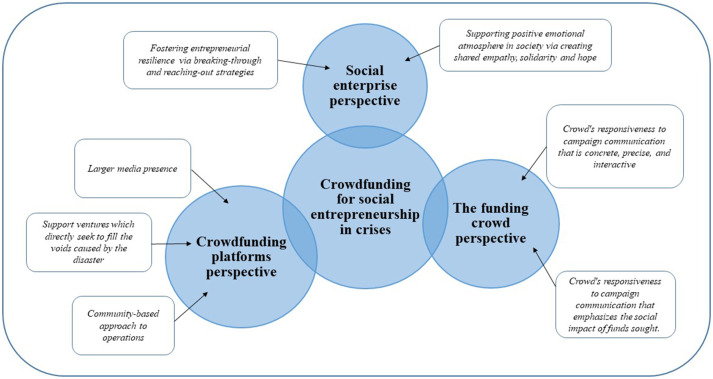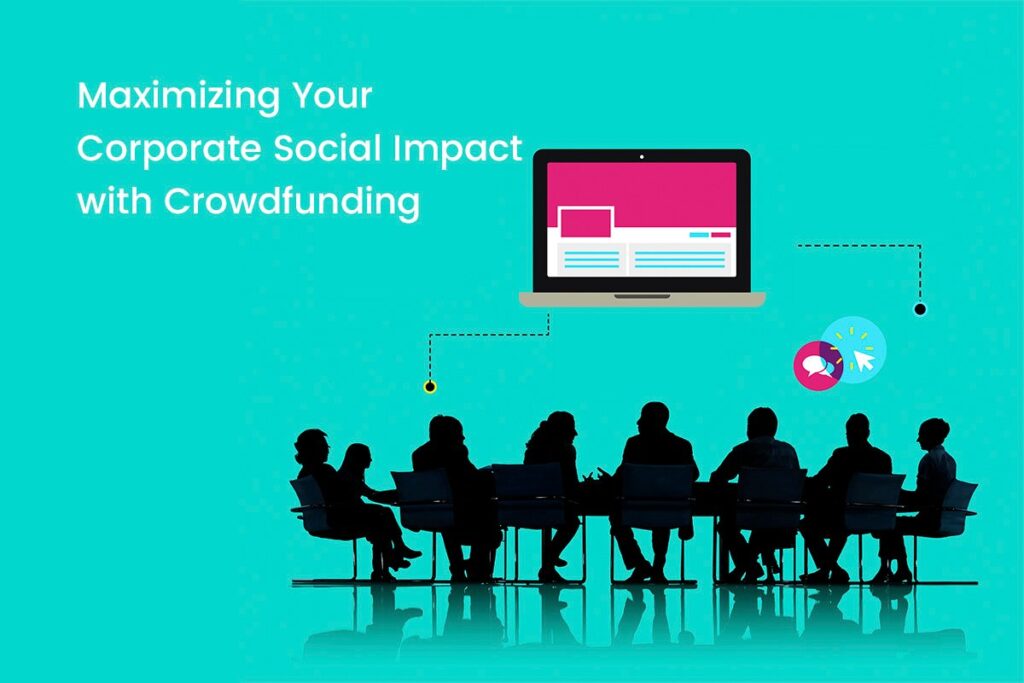https://www.cryptomarketingcompanies.com/https://www.cryptomarketingcompanies.com/Definição de financiamento coletivo
O crowdfunding é um método de angariar fundos para um projeto ou empreendimento através do recebimento de pequenas contribuições de um grande número de pessoas, normalmente através de uma plataforma online. É uma forma de financiamento alternativo que permite que indivíduos ou organizações contornem os métodos tradicionais de financiamento e procurem apoio financeiro diretamente do público em geral.
Estatísticas sobre o crescimento do crowdfunding
A popularidade do crowdfunding cresceu significativamente nos últimos anos. De acordo com a pesquisa, o mercado de crowdfunding vale aproximadamente US$ 1,1 bilhão globalmente, com campanhas médias atingindo US$ 8.000. Este crescimento pode ser atribuído à acessibilidade e conveniência das plataformas online, que têm facilitado a contribuição dos indivíduos para projetos alinhados com os seus interesses e valores.
Diferentes tipos de plataformas de crowdfunding
Existem vários tipos de plataformas de crowdfunding que atendem a diferentes tipos de projetos e objetivos de arrecadação de fundos. Alguns dos tipos mais comuns incluem:
- Crowdfunding baseado em doações: Este tipo de plataforma permite que indivíduos façam contribuições voluntárias para apoiar uma causa ou projeto sem esperar qualquer retorno financeiro.
- Financiamento coletivo baseado em recompensas: No financiamento coletivo baseado em recompensas, os contribuidores recebem incentivos ou recompensas não financeiras em troca de seu apoio. Essas recompensas podem variar de mercadorias exclusivas a experiências personalizadas.
- Financiamento coletivo baseado em ações: O financiamento coletivo baseado em ações envolve a troca de contribuições financeiras por uma participação na empresa ou projeto. Os contribuintes tornam-se acionistas e têm potencial para obter um retorno financeiro sobre o seu investimento.
- Financiamento coletivo baseado em dívida: O financiamento coletivo baseado em dívida, também conhecido como empréstimo peer-to-peer, permite que indivíduos ou empresas tomem dinheiro emprestado do público e o reembolsem com juros durante um período especificado.
Cada tipo de plataforma de crowdfunding atende a propósitos diferentes e atrai públicos diferentes, oferecendo uma gama de opções para indivíduos ou organizações que buscam arrecadar fundos para seus projetos.
Projetos de Impacto Social e Crowdfunding
Definição de projetos de impacto social
Projetos de impacto social são iniciativas que visam abordar questões sociais ou ambientais e fazer uma diferença positiva na sociedade. Estes projetos podem ser organizações sem fins lucrativos, empresas sociais ou iniciativas de base e muitas vezes centram-se em áreas como a redução da pobreza, a educação, a saúde, a conservação ambiental e o desenvolvimento comunitário.
Exemplos de projetos de impacto social
Existem inúmeros exemplos de projetos de impacto social que utilizaram com sucesso o financiamento coletivo para atingir seus objetivos. Alguns exemplos notáveis incluem:
- The Ocean Cleanup: Um projeto dedicado ao desenvolvimento de tecnologias avançadas para remover a poluição plástica do oceano. Através de campanhas de crowdfunding , a The Ocean Cleanup arrecadou milhões de dólares para financiar os seus sistemas inovadores de limpeza.
- Solar Sister: Uma organização que capacita mulheres na África rural, proporcionando-lhes acesso a soluções de energia limpa. A Solar Sister usou o crowdfunding para expandir suas operações e alcançar mais comunidades necessitadas.
- Pencils of Promise: Uma organização sem fins lucrativos que constrói escolas e fornece recursos educacionais para crianças em países em desenvolvimento. Através do financiamento coletivo, a Pencils of Promise conseguiu financiar a construção de inúmeras escolas e apoiar programas educacionais em todo o mundo.
Desafios enfrentados por projetos de impacto social
While crowdfunding has proven to be an effective tool for social impact projects, these initiatives also face unique challenges. Some of the common challenges include:
- Limited visibility: Social impact projects may not receive as much attention or exposure as commercial projects, making it challenging to attract a large number of contributors.
- Long fundraising timelines: Compared to other types of crowdfunding campaigns, social impact projects often require more time and effort to reach their financial targets. This is because potential contributors may need more convincing and reassurance of the project’s impact before making a contribution.
- Sustaining momentum: Once a social impact project meets its initial funding goal, it is crucial to maintain momentum and continue raising funds to sustain and expand the project’s impact. This can be challenging, as the project may lose visibility and struggle to attract new contributors.
Overcoming these challenges requires strategic planning, effective communication, and a tailored approach to crowdfunding specifically for social impact projects.
The Role of Crowdfunding in Social Impact Projects
Advantages of crowdfunding for social impact projects
Crowdfunding offers several advantages for social impact projects compared to traditional funding methods. Some of the key advantages include:
- Accessibility: Crowdfunding provides an opportunity for individuals or organizations with limited access to traditional funding sources to raise the necessary funds for their projects. It democratizes the fundraising process and allows anyone with a compelling idea to seek support from a large number of potential contributors.
- Increased community engagement: Crowdfunding platforms enable social impact projects to engage directly with their target audience and build a community of supporters. This not only helps with fundraising but also creates a sense of ownership and involvement among contributors, leading to long-term support and advocacy.
- Validation and proof of concept: Successfully crowdfunding a project can serve as proof of concept and validate the viability and impact of the project. This can be valuable when seeking additional funding or partnerships from other stakeholders, such as foundations, investors, or government agencies.
- Flexibility and control: Crowdfunding allows project organizers to have full control over their fundraising efforts, from setting the financial target to choosing the communication strategies. This flexibility enables social impact projects to tailor their campaigns to appeal to their specific target audience and maximize their chances of success.
Case studies of successful crowdfunding campaigns for social impact projects
Numerous social impact projects have achieved remarkable success through crowdfunding. Two notable case studies include:
- The ALS Ice Bucket Challenge: The ALS Association launched a viral crowdfunding campaign in 2014, challenging participants to pour a bucket of ice water over their heads and donate to support research on amyotrophic lateral sclerosis (ALS). The campaign went viral on social media, resulting in over $115 million in donations within a few months. The funds raised significantly accelerated ALS research and led to breakthroughs in understanding and treating the disease.
- Solar Roadways: Solar Roadways is a project that aims to accelerate the transition to clean energy by developing solar panels that can be used as roads, driveways, and parking lots. Through crowdfunding campaigns, Solar Roadways raised over $2.2 million to further develop and test their innovative technology. The project has since received additional funding and has seen successful pilot installations in various locations.
The impact of crowdfunding on social impact project outcomes
Crowdfunding has the potential to significantly impact the outcomes and success of social impact projects. By directly engaging with the target audience and mobilizing community support, crowdfunding campaigns can generate the necessary funds to initiate, sustain, or expand a project. The transparency and accountability inherent in crowdfunding also ensure that the raised funds are used for their intended purpose, enhancing the credibility and trustworthiness of social impact initiatives.
Additionally, crowdfunding can serve as a powerful marketing tool for social impact projects, raising awareness and attracting media attention. This increased visibility can attract potential partners, volunteers, or other forms of support, further amplifying the project’s impact.
Motivating Contributors for Social Impact Projects
Understanding why people contribute to social impact projects
Motivating contributors to support social impact projects requires an understanding of their underlying motivations. While financial incentives can play a role, studies have shown that people are often driven by emotional and psychological factors. Some common motivations for contributing to social impact projects include:
- Altruism: Many individuals contribute to social impact projects because they genuinely care about making a positive difference in the world. They are motivated by a sense of empathy, compassion, and a desire to improve the lives of others.
- Personal connection: Contributors may have a personal connection to the cause or project, such as personal experiences or a shared identity with the target beneficiaries. This emotional connection can drive them to contribute and support the project’s goals.
- Social validation: People are often influenced by social norms and want to be seen as socially responsible. Contributing to social impact projects allows individuals to align their actions with their values and gain social validation from their peers.
The role of emotions in crowdfunding campaigns
Emotions play a significant role in crowdfunding campaigns, particularly for social impact projects. By tapping into the emotions of potential contributors, project organizers can create a compelling narrative and appeal to their emotional desire to make a positive impact. Some emotions that can be effectively utilized in crowdfunding campaigns include:
- Empathy: Creating empathy-inducing narratives that highlight the struggles and challenges faced by the target beneficiaries can evoke emotions of compassion and empathy in potential contributors. Personal stories, images, and videos can help bridge the emotional gap between the project and the audience.
- Hope and optimism: Inspiring hope and optimism in potential contributors can motivate them to support a social impact project. By presenting the project as a solution to a pressing problem and highlighting the potential positive outcomes, project organizers can instill a sense of optimism and belief in the achievable impact.
- Gratitude and appreciation: Expressing gratitude and appreciation towards contributors can create a positive emotional bond and foster a sense of trust and loyalty. Regular updates, personalized acknowledgments, and thank-you messages can make contributors feel valued and appreciated, increasing the likelihood of future support.
Communication strategies to appeal to contributors for social impact projects
Effective communication is crucial in appealing to potential contributors and motivating them to support social impact projects. Some communication strategies that can be employed include:
- Storytelling: Crafting compelling narratives that highlight the project’s mission, impact, and the stories of individuals or communities affected by the social issue can create an emotional connection with potential contributors. Storytelling humanizes the project and makes it relatable, increasing the likelihood of support.
- Clear and concise messaging: Communicating the project’s goals, impact, and financial needs in a clear and concise manner is essential. Potential contributors should easily understand how their contribution will make a difference and what specific outcomes their support will enable.
- Visual content: Utilizing visual content such as images, videos, and infographics can make the project more engaging and memorable. Visual content has a higher likelihood of being shared on social media platforms, increasing the project’s reach and visibility.
- Authenticity and transparency: Building trust with potential contributors is crucial. Project organizers should be transparent about how the funds will be used, provide regular updates on the project’s progress, and demonstrate accountability. Authentic and transparent communication fosters trust and credibility, increasing the chances of successful crowdfunding.

The Importance of Prosocial Narratives
Defining prosocial narratives
Prosocial narratives are storytelling techniques that emphasize the positive impact and benefits that a social impact project can have on individuals or communities. These narratives focus on the project’s mission, values, and the transformative power of collective action. Prosocial narratives aim to inspire and motivate potential contributors by highlighting the project’s potential to create meaningful change.
The power of storytelling in crowdfunding campaigns
Storytelling is a powerful tool in crowdfunding campaigns, as it allows project organizers to create an emotional connection with potential contributors. Storytelling can evoke empathy, compassion, and a sense of belonging, compelling individuals to take action and support the project. Key elements of effective storytelling in crowdfunding campaigns include:
- Personal stories: Sharing personal stories of individuals or communities directly affected by the social issue can humanize the project and make it more relatable. Hearing about real people and their struggles creates an emotional connection and motivates potential contributors to support the cause.
- Conflict and resolution: Presenting the project as a solution to a pressing problem or challenge can create a sense of urgency and inspire contributors to act. Highlighting the potential positive outcomes and the impact that the project can have provides a narrative arc that engages potential contributors and builds anticipation.
- Visual and sensory details: Incorporating vivid visual and sensory details in the storytelling process can make the narrative more engaging and memorable. Descriptions of sights, sounds, and emotions help potential contributors imagine themselves as part of the story, strengthening their emotional connection to the project.
- Call to action: An effective storytelling campaign should include a clear call to action that directs potential contributors to take specific steps to support the project. Whether it is making a donation, sharing the campaign on social media, or volunteering, a compelling call to action helps potential contributors channel their emotional response into concrete actions.
Case studies of successful prosocial narratives in crowdfunding campaigns
Several successful crowdfunding campaigns have utilized prosocial narratives to inspire and engage potential contributors. Two notable case studies include:
- The Refugee Aid App: This app aimed to provide essential resources and support for refugees around the world. By sharing the stories of individual refugees and their journeys, the campaign was able to create empathy and inspire contributors to support the project’s development and implementation.
- The Girl Effect: This campaign focused on empowering girls in developing countries through education and mentorship programs. The campaign utilized storytelling to highlight the transformative impact of education on individual girls’ lives and the long-term benefits for their communities and societies.
By utilizing prosocial narratives effectively, crowdfunding campaigns can create a sense of urgency, empathy, and connection in potential contributors, increasing the likelihood of their support.
Incentives for Contributors
The types of incentives that can be offered
Incentives play an important role in motivating potential contributors to support social impact projects. While financial incentives can be offered, non-financial incentives can also be effective in engaging and rewarding contributors. Some types of incentives that can be offered include:
- Rewards: Non-financial rewards such as exclusive merchandise, personalized experiences, or early access to project updates can be offered in exchange for contributions. These rewards can create a sense of exclusivity and value for contributors, motivating them to support the project.
- Recognition: Providing public recognition and acknowledgment to contributors can be a powerful incentive. This can be done through social media shoutouts, featuring contributors’ names on project websites, or hosting special events or gatherings for supporters.
- Impact updates: Regular updates on the project’s progress, outcomes, and impact can serve as an incentive for contributors. Knowing that their contribution is making a difference and being able to see the tangible results of their support can be highly rewarding for contributors and encourage long-term engagement.
- Involvement opportunities: Offering opportunities for contributors to actively participate in the project can be a compelling incentive. This can include volunteering at project events, participating in workshops or training programs, or joining advisory boards or committees.
The effectiveness of material rewards in crowdfunding campaigns for social impact projects
While material rewards can be offered in crowdfunding campaigns for social impact projects, their effectiveness can vary. Studies have shown that material rewards may not be the primary motivator for individuals contributing to social impact projects. Contributors are often driven by a desire to make a positive impact and align their actions with their values, rather than receiving tangible rewards.
That being said, inexpensive rewards that align with the project’s mission and impact can still be valued by specific contributors. For example, offering a thank-you gift that reflects the project’s social or environmental cause, such as a biodegradable product, can enhance the contributor’s experience and sense of connection to the project. The key is to ensure that the material rewards align with the values and motivations of the target audience.
Aligning incentives with the values of contributors
To effectively motivate contributors, incentives should align with their values and motivations. Understanding the target audience’s preferences, interests, and aspirations is crucial in determining the most compelling incentives. Some strategies to align incentives with the values of contributors include:
- Conducting audience research: Conducting surveys, interviews, or focus groups with potential contributors can provide valuable insights into their values, preferences, and motivations. This research can help identify the types of incentives that would resonate most with the target audience.
- Tailoring incentives to specific segments: Recognizing that different contributors may have different motivations, it is important to tailor incentives to specific segments of the target audience. For example, some contributors may value recognition and social validation, while others may be more interested in experiential rewards.
- Asking for feedback: Asking for feedback from previous contributors or conducting post-campaign surveys can provide valuable feedback on the effectiveness of incentives and suggestions for improvement. This feedback loop helps project organizers continuously refine their incentive strategies and better align them with the values and preferences of contributors.
Aligning incentives with the values of contributors enhances their experience, strengthens their connection to the project, and increases the likelihood of their continued support.

Challenges and Limitations of Crowdfunding for Social Impact Projects
Lack of awareness and visibility for social impact projects
One of the key challenges that social impact projects face in crowdfunding is the lack of awareness and visibility. Unlike commercial projects or products, social impact projects may struggle to attract widespread attention and capture the interest of potential contributors. Limited resources and capacity for marketing and promotion can contribute to this challenge.
To overcome this challenge, social impact projects can leverage various strategies to increase their visibility, including:
- Utilizing social media: Social media platforms provide a cost-effective way to reach a wide audience and engage potential contributors. By creating compelling content, utilizing relevant hashtags, and partnering with influencers or organizations with aligned interests, social impact projects can increase their online presence and attract attention.
- Partnering with complementary organizations: Collaborating with other organizations or initiatives that share similar goals or values can help amplify the project’s visibility. Joint campaigns, cross-promotion, or co-hosted events can introduce the project to new audiences and attract potential contributors.
- Leveraging traditional media channels: Press releases, media outreach, and partnerships with journalists or publications can help social impact projects gain media coverage and reach a broader audience. Telling unique and compelling stories that are newsworthy can capture the attention of journalists and increase the project’s visibility.
The risk of project failure and loss of funds
Crowdfunding projects, including social impact projects, inherently carry a risk of failure. Not all projects will reach their funding goals, and even those that do may face challenges in delivering on their promises or achieving the intended impact. This risk can deter potential contributors who may be hesitant to contribute to projects with uncertain outcomes.
To mitigate this risk and increase trust among potential contributors, social impact projects can:
- Provide transparency: Clearly communicate the project’s goals, timelines, and plans for resource allocation. Potential contributors should have a clear understanding of how their funds will be used and what impact they can expect.
- Share progress updates: Regularly update backers and supporters on the project’s progress, challenges, and achievements. Sharing both successes and setbacks demonstrates accountability and transparency, showing potential contributors that the project is actively working towards its goals.
- Engage in stakeholder dialogue: Creating opportunities for potential contributors to ask questions, provide feedback, and engage in discussions can build trust and confidence. Demonstrating a willingness to listen, learn, and adapt based on stakeholder input helps establish credibility and mitigate the risk of project failure.
Issues of accountability and transparency in crowdfunding campaigns
Crowdfunding campaigns, including those for social impact projects, must address issues of accountability and transparency. Potential contributors need assurance that their funds will be used as intended and that the project organizers are responsible stewards of their contributions.
To ensure accountability and transparency in crowdfunding campaigns, social impact projects can:
- Clearly state the project’s objectives: Clearly define the project’s goals, outcomes, and intended impact. Project organizers should be transparent about how the funds will be used to achieve these objectives.
- Provide detailed budget breakdowns: Clearly communicate how the funds will be allocated and provide a breakdown of the project’s budget. This level of transparency helps potential contributors understand how their contributions will be utilized.
- Regularly report on progress: Provide regular updates on the project’s progress, including milestones achieved, challenges faced, and the impact generated. Project organizers should be transparent about both successes and setbacks to maintain trust and accountability.
- Engage in open communication: Encourage open and transparent communication with potential contributors, including responding to inquiries, addressing concerns, and soliciting feedback. Engagement and dialogue create an atmosphere of trust and help establish credibility.
By prioritizing accountability and transparency, social impact projects can build trust with potential contributors and increase their likelihood of receiving financial support.
Regulations and Legal Considerations for Crowdfunding
Overview of crowdfunding regulations
Crowdfunding regulations vary across different countries and jurisdictions. Governments and regulatory bodies implement rules and guidelines to protect contributors and ensure the integrity of crowdfunding campaigns. Regulations typically cover areas such as:
- Investor protection: Regulations aim to protect individual investors by setting limits on the amount they can invest and imposing disclosure requirements on issuers.
- Registration and licensing: Crowdfunding platforms may be required to register or obtain licenses to operate legally. These regulations help ensure that platforms are operating in compliance with relevant laws and regulations.
- Reporting and disclosure: Crowdfunding campaigns may be subject to reporting and disclosure requirements, such as providing financial statements, progress updates, or information about the risks and rewards associated with the project.
- Anti-money laundering and fraud prevention: Regulations often include measures to prevent money laundering and fraudulent activities in crowdfunding campaigns. This can include identity verification procedures, anti-fraud measures, and reporting suspicious transactions.
It is crucial for social impact projects and crowdfunding platforms to familiarize themselves with the specific regulations in their jurisdiction to ensure compliance and protect the interests of contributors.
The impact of regulations on social impact projects
Regulations can have both positive and negative impacts on social impact projects seeking to utilize crowdfunding. On one hand, regulations help protect contributors by ensuring transparency, accountability, and the prevention of fraud or misconduct. This can increase the trust and confidence of potential contributors, leading to a greater willingness to support social impact projects.
On the other hand, regulations can also impose additional administrative burdens, compliance costs, and regulatory barriers that may limit the ability of social impact projects to utilize crowdfunding effectively. Particularly for small-scale or grassroots initiatives, compliance with complex regulations can be challenging and potentially deter projects from pursuing crowdfunding as a funding strategy.
To address these challenges, social impact projects can:
- Seek legal guidance: Consulting with legal experts or organizations familiar with crowdfunding regulations can help social impact projects understand their obligations and navigate the regulatory landscape effectively.
- Collaborate with experienced platforms: Partnering with established and compliant crowdfunding platforms can provide social impact projects with access to the platform’s regulatory expertise and resources. This collaboration can help ensure compliance while minimizing administrative burdens for the project.
- Advocate for supportive regulations: Engaging in advocacy efforts to promote regulatory frameworks that support social impact crowdfunding can benefit the broader ecosystem. Collaborating with other stakeholders, such as industry associations or policymakers, can help shape regulations that balance investor protection with the needs and goals of social impact projects.
Legal considerations for crowdfunding campaigns
In addition to regulatory obligations, social impact projects engaging in crowdfunding campaigns should consider various legal aspects. These considerations include:
- Intellectual property: Protecting intellectual property rights, such as trademarks, copyrights, or patents, is crucial for social impact projects. Project organizers should ensure they have the necessary legal protections in place to prevent unauthorized use or infringement of their intellectual property.
- Contracts and agreements: Crowdfunding campaigns may involve various contractual relationships, such as agreements with crowdfunding platforms, service providers, or suppliers. It is important to carefully review and negotiate these contracts to ensure they align with the project’s goals and protect the project’s interests.
- Tax obligations: Crowdfunding campaigns may have tax implications, such as income tax, sales tax, or value-added tax (VAT). Social impact projects should consult with tax professionals to understand their tax obligations and ensure compliance.
- Privacy and data protection: Crowdfunding campaigns involve the collection and use of personal data from contributors. Project organizers should comply with applicable data protection laws and regulations, ensuring the proper handling and protection of personal information.
By addressing these legal considerations, social impact projects can minimize legal risks and protect their interests throughout the crowdfunding process.

Success Stories and Lessons Learned
Examples of successful crowdfunding campaigns for social impact projects
Numerous social impact projects have achieved remarkable success through crowdfunding campaigns. Some noteworthy examples include:
- The Pebble Time Smartwatch: This project aimed to develop a customizable smartwatch with advanced features. The campaign raised over $20 million on Kickstarter, making it one of the most successful crowdfunding campaigns to date. The project demonstrated the demand for innovative technology and captured the interest and support of contributors worldwide.
- The Global Village Shelter: This innovative shelter project aimed to provide sustainable and affordable housing solutions for those in need. The crowdfunding campaign raised over $600,000, enabling the project to develop and deploy shelters in disaster-stricken areas around the world. The project’s focus on sustainability, social impact, and affordability resonated with contributors and attracted significant support.
Key strategies and tactics used in successful campaigns
Successful crowdfunding campaigns for social impact projects often employ specific strategies and tactics to maximize their chances of success. Some key strategies include:
- Engaging the target audience: Successful campaigns understand their target audience and tailor their messaging, incentives, and storytelling to resonate with potential contributors. This audience-centric approach helps create a sense of connection and relevancy, increasing the likelihood of support.
- Leveraging social networks: Social media platforms and online communities provide a ready-made network of potential contributors and supporters. Successful campaigns leverage these networks by actively engaging with them, sharing updates, and encouraging sharing and word-of-mouth marketing.
- Building momentum and urgency: Creating a sense of momentum and urgency is crucial in crowdfunding campaigns. Successful projects often utilize tactics such as limited-time offers, early bird discounts, or stretch goals to encourage immediate action and create buzz around the campaign.
- Establishing credibility and trust: Building trust is essential in crowdfunding campaigns. Successful projects provide comprehensive information about the project, including team profiles, past successes, and testimonials. They also demonstrate transparency, accountability, and regular communication with contributors.
Lessons learned from failed crowdfunding campaigns for social impact projects
Not all crowdfunding campaigns are successful, and there are valuable lessons to be learned from failed campaigns. Some common reasons for failure include:
- Lack of preparation: Insufficient planning, research, and preparation can jeopardize the success of a crowdfunding campaign. It is important to have a well-defined project plan, a clear understanding of the target audience, and a compelling message before launching a campaign.
- Ineffective communication and marketing: Failing to effectively communicate the project’s goals, impact, and benefits can hinder the success of a crowdfunding campaign. Campaign organizers should invest time and effort in crafting engaging messaging, utilizing compelling visuals, and leveraging appropriate marketing channels to reach potential contributors.
- Unrealistic financial goals: Setting unrealistic financial targets can lead to disappointment and campaign failure. It is important to conduct thorough research to understand the average contribution size and fundraising potential for similar projects. Setting achievable and realistic financial goals increases the chances of success.
- Lack of engagement and follow-through: Crowdfunding campaigns require ongoing engagement and follow-through. Failure to engage with potential contributors, provide regular updates, and demonstrate progress can lead to a loss of interest and support.
By analyzing the reasons for failed campaigns, social impact projects can learn valuable lessons and make necessary adjustments to improve their chances of success in future crowdfunding endeavors.
The Future of Crowdfunding for Social Impact Projects
Trends and predictions for the future of crowdfunding
The future of crowdfunding for social impact projects is likely to see several trends and developments. Some key trends and predictions include:
- Growth of niche platforms: As the crowdfunding ecosystem continues to evolve, we can expect to see the emergence of niche platforms that cater specifically to social impact projects. These platforms will provide customized tools and services tailored to the unique needs and goals of social impact initiatives.
- Integration of blockchain technology: The integration of blockchain technology in crowdfunding can enhance transparency, security, and trust in the process. Blockchain-based crowdfunding platforms can provide immutable records of contributions, automate smart contracts, and ensure greater accountability for project organizers.
- Increased collaboration and partnerships: Crowdfunding campaigns for social impact projects may increasingly involve collaborations and partnerships with diverse stakeholders, such as corporations, nonprofits, and government agencies. These partnerships can provide valuable resources, networks, and expertise for campaigns, amplifying their impact.
Emerging technologies and platforms for social impact crowdfunding
Advancements in technology are opening up new possibilities for social impact crowdfunding. Some emerging technologies and platforms that hold potential for social impact crowdfunding include:
- Virtual reality (VR) and augmented reality (AR): VR and AR can provide immersive experiences that allow potential contributors to interact with the project, see the impact firsthand, and better understand the need for support. These technologies can transport contributors to the project’s location, showcasing the real-life challenges and the transformative power of their contribution.
- Peer-to-peer (P2P) lending platforms: P2P lending platforms, which facilitate direct borrowing and lending between individuals, can provide alternative funding options for social impact projects. By cutting out traditional financial intermediaries, P2P lending platforms can simplify the funding process and provide access to capital for underserved social impact projects.
- Data-driven crowdfunding platforms: Data analytics and machine learning can enable crowdfunding platforms to provide personalized recommendations, optimize campaign performance, and enhance the overall crowdfunding experience. This data-driven approach can help social impact projects better understand their target audience and tailor their campaigns accordingly.
The potential for crowdfunding to revolutionize social impact initiatives
Crowdfunding has the potential to revolutionize social impact initiatives by democratizing the funding process and enabling anyone with a compelling idea to raise the necessary funds. By directly engaging with potential contributors and building a community of supporters, social impact projects can access resources, expertise, and networks that were traditionally limited to established organizations or institutions.
O crowdfunding também facilita a inovação e a experimentação, permitindo que projetos de impacto social testem novas ideias, validem conceitos e obtenham feedback de potenciais contribuidores. A natureza transparente e responsável do crowdfunding promove a confiança e a credibilidade, aumentando o potencial de apoio e impacto a longo prazo.
À medida que a tecnologia continua a avançar e o panorama do crowdfunding evolui, os projetos de impacto social têm a oportunidade de aproveitar o poder do crowdfunding para impulsionar mudanças positivas, resolver questões sociais complexas e criar um futuro mais inclusivo e sustentável.





